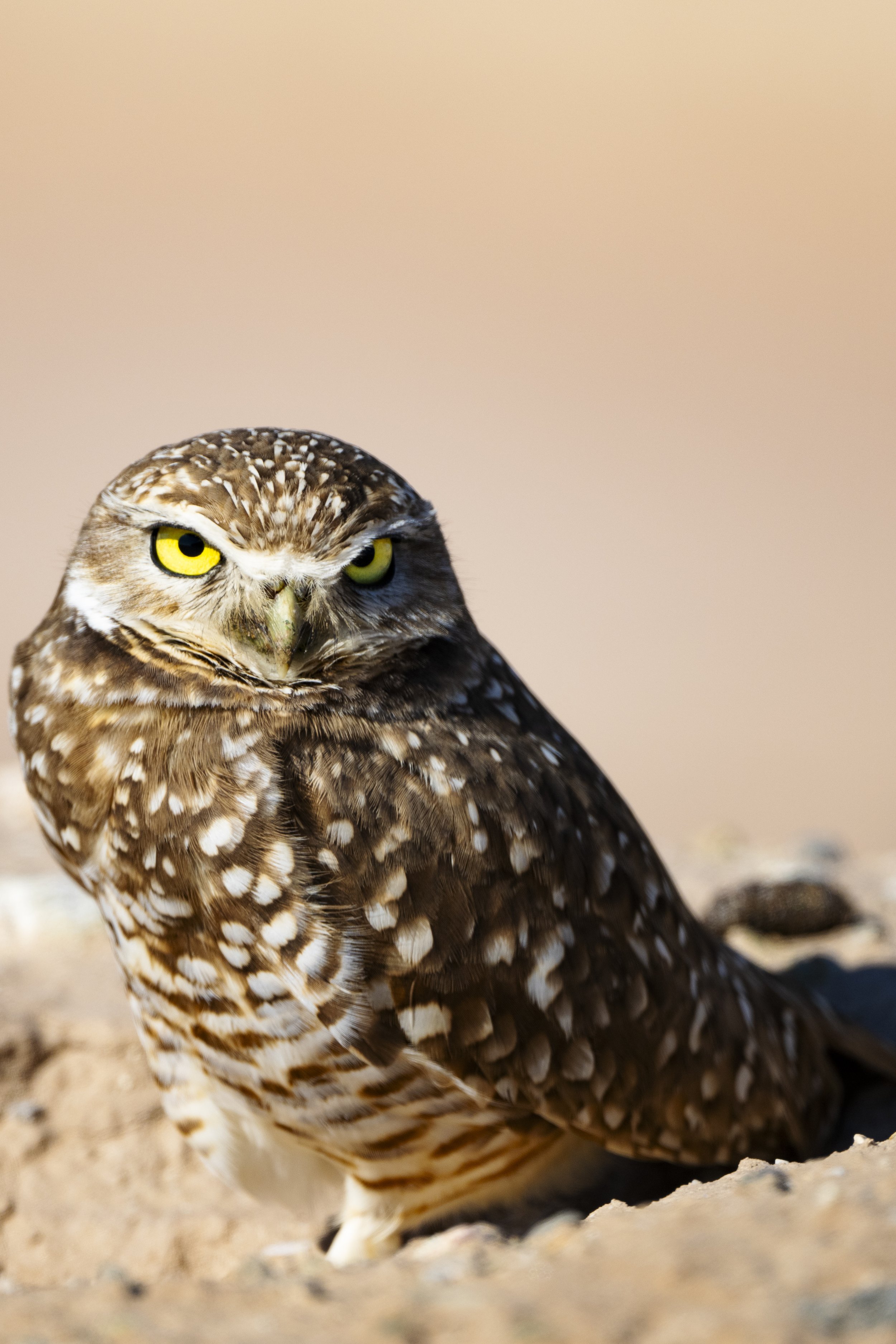California Burrowing Owls
Introduction
I have always wanted to see and photograph Burrowing Owls. They’re a species that had been on my bucket list for quite some time and I even started planning a trip to the parks in the Dakota’s just to see them. In early March, 2024, we spent a week exploring and photographing some of the wonderful National Parks in Arizona and Southern California. During our last evening in Joshua Tree, as I was photographing the sunset, we met a lovely couple from Canada who also happened to be birders. They had just come from Salton Sea area and told me they saw many Burrowing Owls and that it was one of the densest populations in the country. Some quick Google searching revealed it was less than 3 hours away and would add about 3 extra hours onto our drive back to Arizona, so we made the decision to go and spend a few hours looking for for these tiny marvels.
I’m so glad we made this decision, because even though our time with them was brief, it was incredible and has gotten me even more excited to see and photograph them in the future. In this short post, i’ll share a little bit about the owls and the wildlife refuge where we found them along with some tips on finding and photographing them.
Standing Guard
Burrowing owls are protective of their burrows and you’ll often see them hanging around them as if standing guard.
Sonny Bono Salton Sea National Wildlife Refuge
It’s no secret that i’m a huge fan of our National Wildlife Refuges. I’ve written other blog posts detailing experiences in other refuges, but I have to admit that I hadn’t heard of Sonny Bono Salton Sea NWR before. Of course, I know who Sonny Bono was and the refuge was named for him in 1998 as a way to honor his significant efforts towards wildlife and land conservation.
The refuge itself sits not he south-eastern edge of the Salton Sea in Southern California. It sits at an elevation of 227 feet below sea level and is known to have one of the highest diversities of bird species in the western US, with over 400 different species identified.
The refuge is broken up into two sections and surround by farm fields. Our new birder friends had told us that “Unit 1” was the section of the refuge where they saw the owls.
Burrowing Owl Information
Burrowing Owls can be found throughout the western US, Central and South America. In the United States you can find them living as year round residents in the southern portions of California, Arizona, New Mexico and Texas as well as parts of Florida. In the summer, there is a migratory populations that comes typically from Mexico to breed in the Central grasslands of the US.
Physical
Burrowing owls are small, roughly the height of an American Robin, but slightly bulkier (~8-10 inches in height)
Habitat
Burrowing Owls live in open, treeless areas with little vegetation, like grasslands and deserts. They are very adaptable and it’s common to see them in vacant lots, golf courses, and agricultural fields.
Behavior
Burrowing Owls are incredible hunters and eat a variety of things. They commonly hunt rodents and insects and will hunt day and night for food. Breeding pairs typically mate for life and unlike other bird species males and females are the same size. You will frequently see breeding pairs standing outside their burrows like in the image above.
Owl Photography
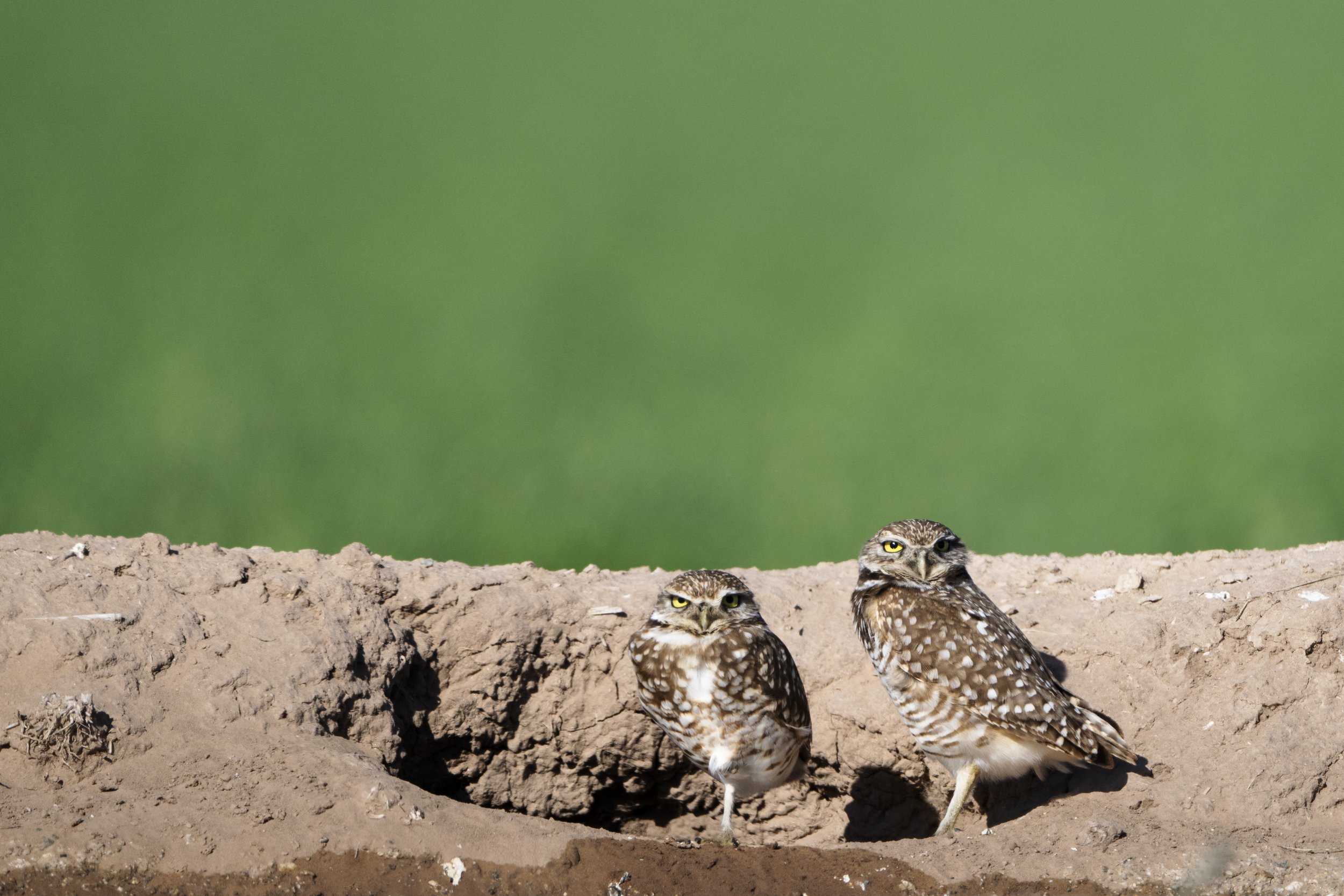
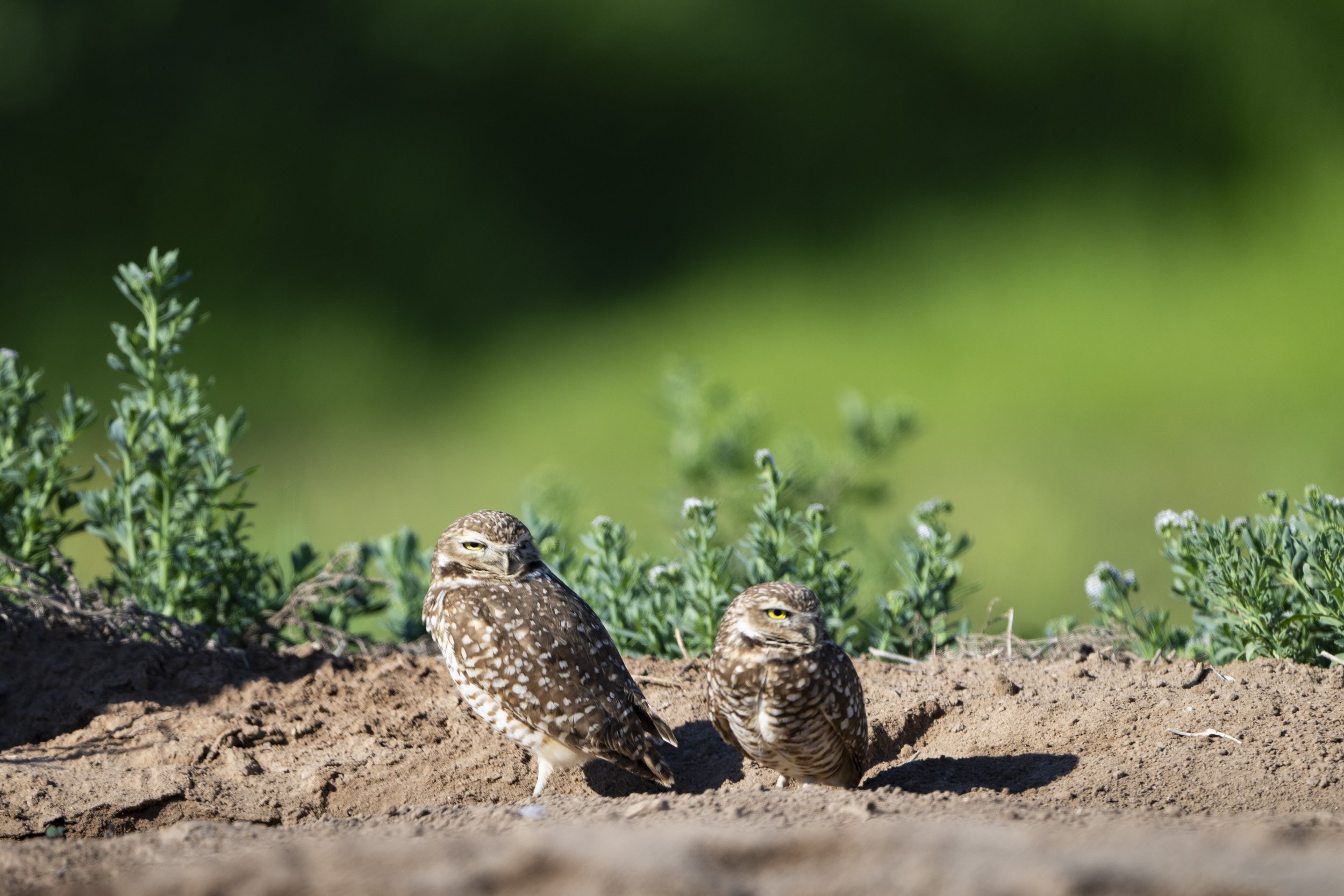
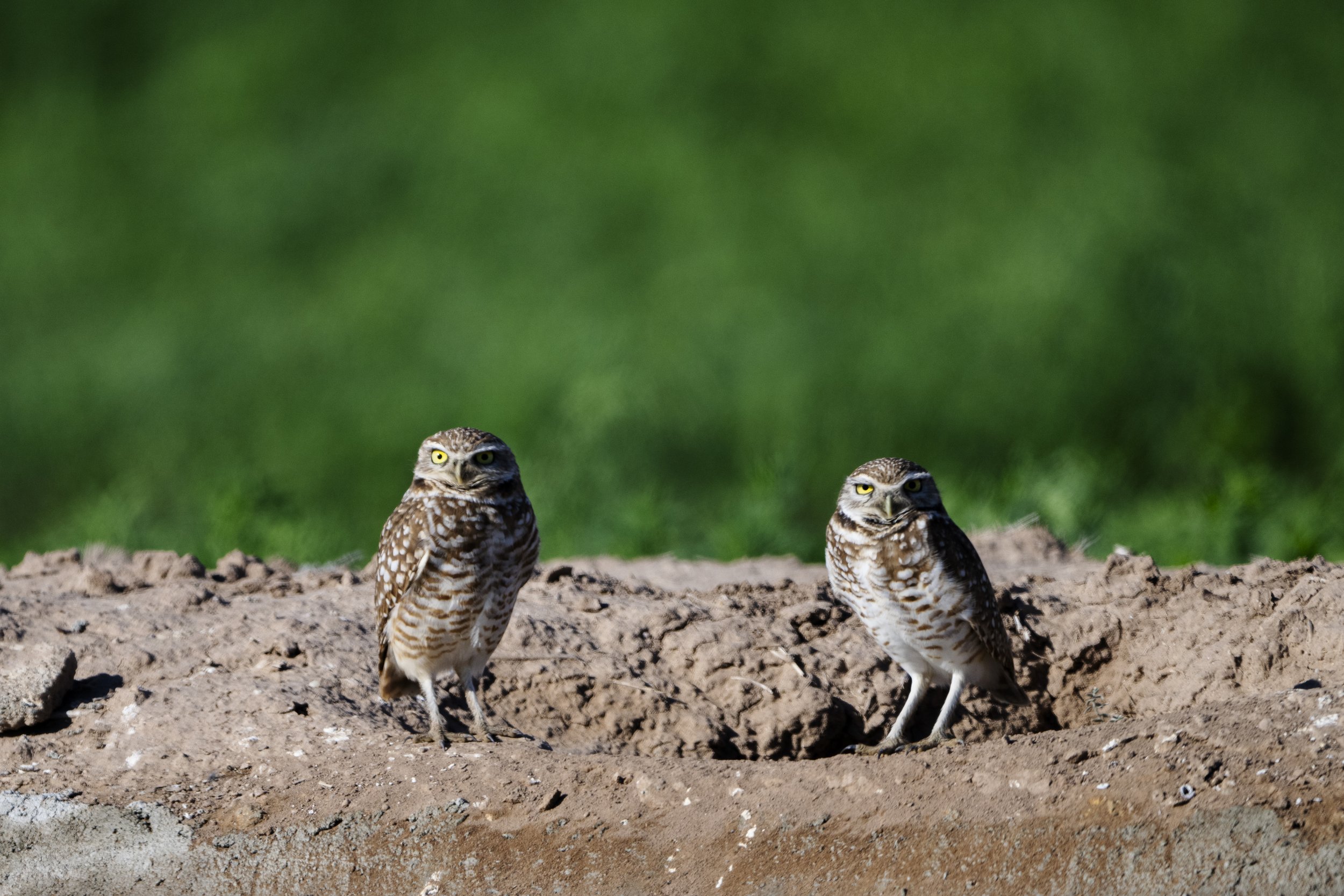
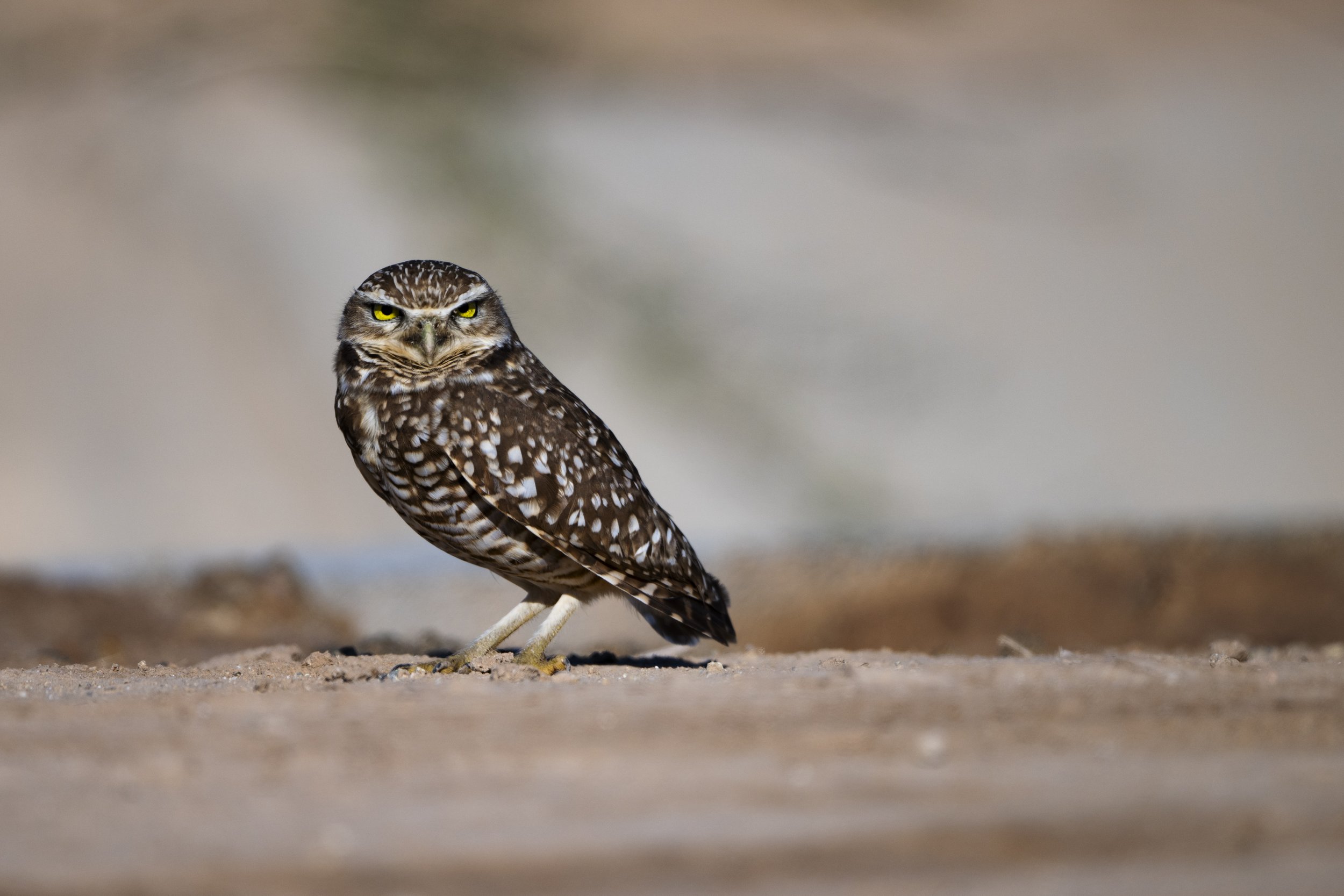
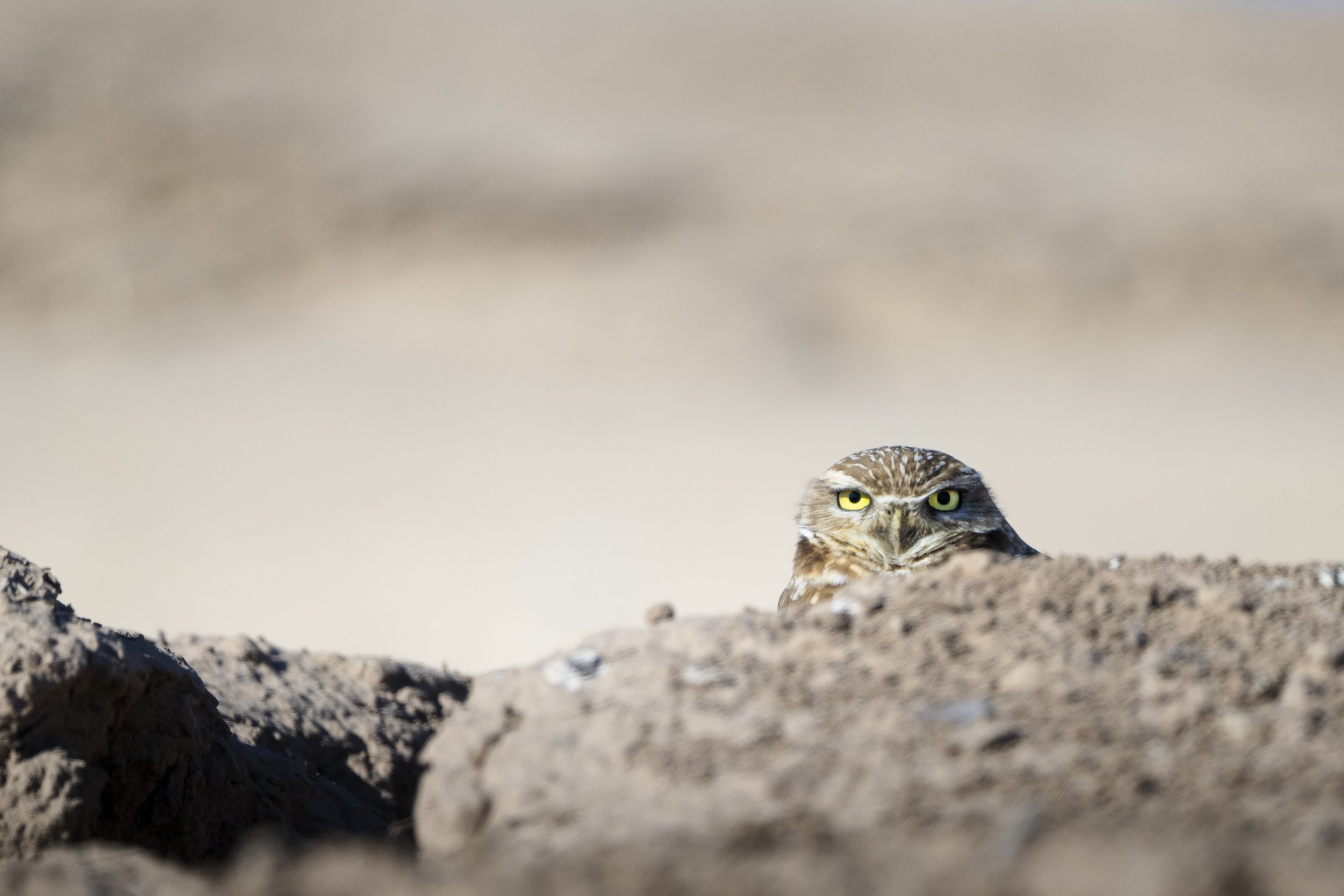
Finding and Photographing Burrowing Owls
Finding Burrowing Owls
If looking for owls in and around Salton Sea NWR we had our best success in looking around the drainage ditches next to the fields surrounding the refuge. We would often drive up and down the dirt roads looking for them. The refuge even had some of the burrows marked with small flags to help ensure that the local farmers were aware of the burrows.
One tip I would share, that was shared with us by our birder friends I mentioned earlier is that because they’re so small, it can be easy to mistake them for stones when scanning for them. So if you see a stone, maybe take a second look just to be sure!
General Photography Tips
These are tiny birds on the ground, but try to photograph them at eye level for more impact and cleaner backgrounds on your images.
Borrowing Owls are fairly tolerant of people and will allow you to get reasonably close to help fill a frame.
I wasn’t able to do this, but if possible early morning and late evening light is best to avoid some of the harsh shadows you see in my photos.
Conclusion & Resources
While we were only able to spend about three hours with these amazing animals, it was easily the highlight of the entire week for me. In total we saw just over 15 Burrowing Owls during that short time. I’m excited for the future where I might be willing to dedicate a full week just to photographing these birds. Hopefully you enjoyed this short article. Below are some additional resources about these owls and the Salton Sea NWR.





